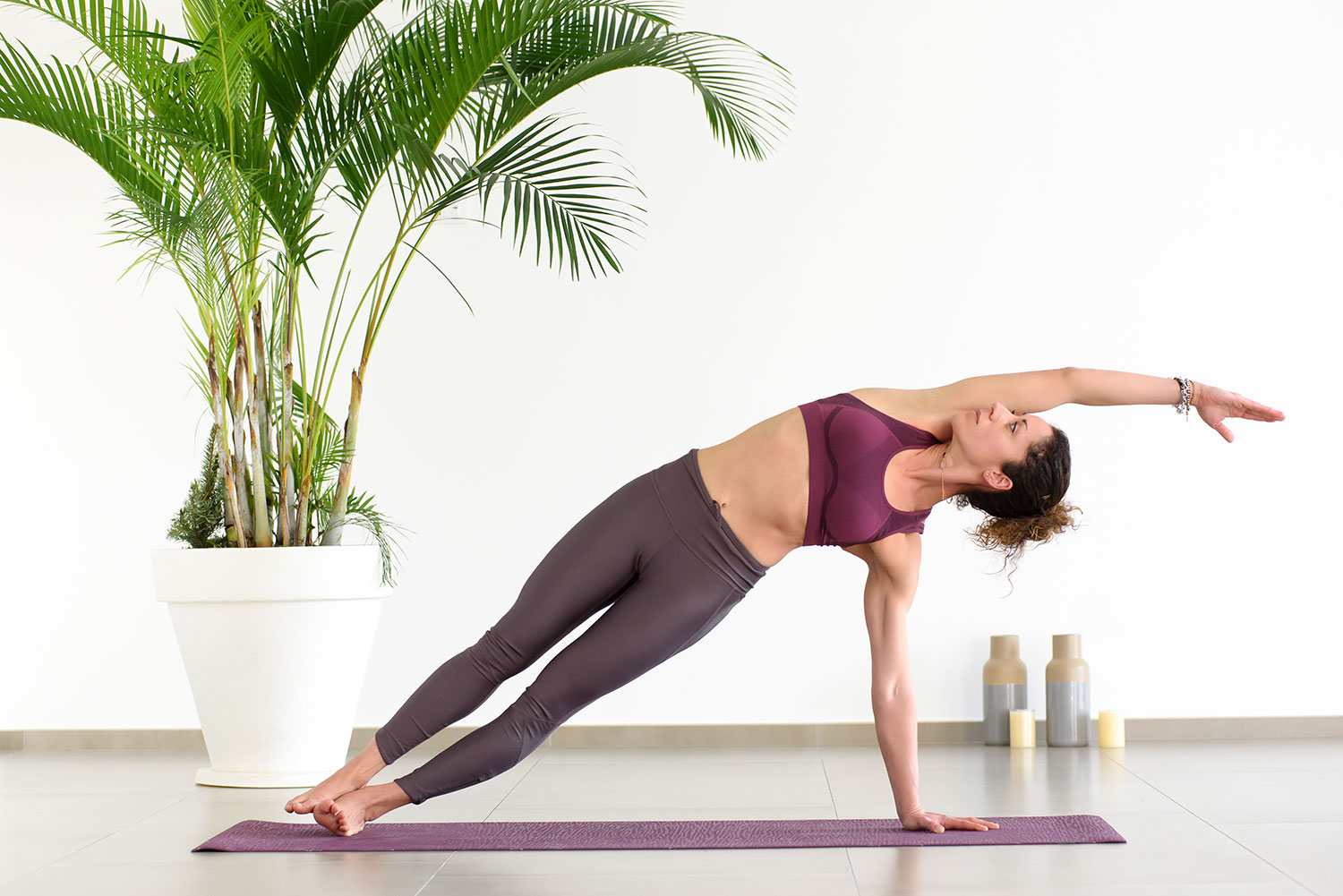
Rose graduated with a degree in Anthropology, which takes her…
A regular yoga practice can help build upper body strength, as well as general stamina. With a focus on specific yoga asanas, or poses, gains in strength can be noticed after only a few weeks of regular practice. As long as the practitioner is willing to commit, and to experience the tell-tale signs of soreness for days following an intense practice, soon they will find the benefits of a strength-focused yoga practice.
Yoga and Body Weight Training

What exactly is meant by upper body strength and stamina? Upper body strength refers to strength in muscle groups such as the arms, shoulders, chest, and upper back. Stamina refers to your ability to sustain effort over a period of time. A person with good stamina can continue exercising, practicing yoga, or performing a certain movement over a long period of time without tiring. Upper body strength and stamina are important not just for an advanced yoga practice, but also for greater comfort and effectiveness in day to day activities such as reaching, carrying, pushing, and more.
Yoga means addition – addition of energy, strength and beauty to body, mind and soul. – Amit Ray
Yoga is an ideal way to improve upper body strength and stamina because it is a form of body weight training. This means that instead of using weights like dumbbells, the exercises are performed with the actual weight of the body. The benefit of this is multifold. For example, body weight is generally heavier than small weights that would be picked up in a gym, adding extra challenge. Additionally, unlike most weight training exercises, it does not isolate muscles. What ensues is a more natural movement that strengthens not just one muscle group, but other stabilizing muscle groups as well.
Of course, other forms of exercise, such as high intensity interval training and weight training can improve upper body strength and stamina. Another difference and benefit of practicing yoga comes with its unique positioning as not just an exercise regime, but actually a 5,000 year old holistic practice. The yogi will leave with not just stronger arms and longer endurance, but also an improved sense of peace, mindfulness, and stress reduction.
A 20 Minute Cardio Yoga Flow for Upper Body Strength
The following is a guide to a short 20 minute yoga flow that will get your heart racing and help you build upper body strength. The poses can be modified to fit your needs, whether you want to take them down a notch, or make them more challenging.
Kumbhakasana — Plank Pose

Start the sequence in plank pose, balanced on your hands and the balls of your feet. Your hands should be planted firmly on the mat, aligned beneath the shoulders. Engage the inner upper arms toward the outer upper arms. The torso is long and straight. Lift up from between the shoulder blades and engage the core. Keep the crown of your head reaching toward the front of the room. The upper thighs are engaged and the kneecaps are lifting.
Plank pose is effective at strengthening the upper body muscles, specifically the wrists, forearms, upper arms, chest, and shoulder girdle.
Chatturanga — Four Limbed Staff Pose

From plank pose, lower down through chatturanga, or four limbed staff pose. To start the pose, press slightly forward, and bend the elbows straight back to the back of the room. The elbows should be pressed against the ribs as you lower down. Press forward on the balls of your feet. In full posture, the body is balanced at shoulder height, elevated off the mat. The elbows are at a right angle, pointing toward the back of the room. The chest is open and reaching to the front of the room.
Four limbed staff pose is a very challenging pose that is often quickly transitioned through. Instead, aim to hold it for at least a few breath cycles in order to get the full upper body strength and stamina benefits. It will improve endurance, and strengthens the upper arms (specifically the triceps), the shoulders, chest, and back. Avoid common mistakes in four limbed staff pose and try not to dump into your shoulders, or lift the bottom in the air. Maintain a straight line from the torso through the legs.
Vashistasana — Side Plank Pose

From four limbed staff pose, press back up into plank pose. From here, you will transition into side plank pose, or vashistasana. Start on your right side. Shift your weight into your right hand. Lift your left leg and stack it, and its foot, on top of your right, whilst shifting onto the outside of your right foot. Inhale and lift your left arm straight to the sky, lifting your gaze along with it. Your body should be completely on one plane now. Keep your shoulders engaged, and your hips lifted. Avoid drooping your hips in this pose. Once you have practiced it on one side, repeat it on the other by transitioning through plank pose.
Side plank pose requires endurance and will test your stamina. It will improve strength in the core muscles, as well as the supporting arm and shoulder.
Adho Mukha Svanasana — Downward Facing Dog Pose

From your final side plank pose, you should have transitioned back to plank pose. Inhale in plank pose, then exhale and, lifting your hips, press back to downward facing dog. In downward facing dog pose, ground evenly through all four corners of your hands. The wrists should be parallel to the front of the mat, and the hands about shoulder’s width apart. The head and neck are relaxed, and the ears are in line with the upper arms. Shoulders and shoulderblades sink down the back. The spine is long and straight and the sits bones reach to the back upper corner of the room. The thighs are engaged and kneecaps are lifted, as the heels reach toward the mat. Maintain this pose for a minimum of ten breaths, bicycling the legs to alleviate any stiffness.
Downward facing dog pose is truly a full body exercise, maximizing yoga’s power of body weight training. It offers a variety of benefits including stretching the hamstrings and acting as an inversion. However, it also requires and will help build upper body strength due to supporting the body weight on the hands and arms throughout the pose.
Catur Svanasana — Dolphin Pose

From downward facing dog, lower onto your forearms one by one. This slight variation is known as dolphin pose, or catur svanasana. It may seem like a simple transition at first, but hold this pose for a minimum of five breaths and you will begin to notice the difference. Avoid bringing your shoulders right over your elbows and instead continue pressing back into them as if you were maintaining the downward facing dog position.
Compared to downward facing dog pose, dolphin pose brings most of the effort into the shoulder girdle. It will significantly improve both shoulder strength and stamina, preparing you for future poses such as forearm stand (pincha mayurasana).
Pincha Mayurasana — Forearm Stand Pose

If you are up for the challenge, try transitioning from dolphin pose into forearm stand pose, or pincha mayurasana. If you have not done inversions before, it is still worth trying this pose as simple practice will lead to increased upper body strength. Start in dolphin pose by bringing the shoulders in line over the elbows, and walking the feet in closer to the face. Then, lift one leg straight in the air. Use the ball of the other foot and try “popping” up off the foot, until your bandahs take hold and you can lift both legs straight in the air. In full posture, the yogi is supported on their forearms. The face is aligned with the hands and the torso and legs are lifted in one long straight line.
Forearm pose is wonderful for stamina, as well as strengthening stabilizing muscles in the upper body. It foremost works on shoulder strength.
Urdvha Mukha Svanasana — Upward Facing Dog Pose

Lower from forearm stand and step back to dolphin pose, before lifting the forearms to find downward facing dog pose. From here, you will go through a short vinyasa sequence to find your next posture. Press forward into plank pose, and lower through into four limbed staff pose. After a brief pause, inhale and untuck the toes, pressing the tops of the feet into the mat. Straighten the arms and draw your chest forward, aligning the shoulders over the wrists. Look up at the ceiling. Keep the upper thighs engaged and the legs a few inches off the mat, in order to keep the low back safe. This is upward facing dog pose.
Upward facing dog pose is a back bend, and a wonderful counterpose to much of the core-focused strength building poses. However, because the body weight is still being supported by the arms, it continues to help build strength in the wrists, forearms, upper arms, and shoulders.
Purvottanasana — Reverse Plank Pose

From upward facing dog, inhale and slightly lift the bottom. From here, exhale and either step or swing the legs through your arms. Keep the hands pressed firmly into the mat, but extend your body straight out and plant your feet side by side firmly on the mat. Keep your hips lifted here and engage the core. You can either gaze down at your feet, or intensify the pose by letting your chest open and you head fall back. This is known as reverse plank pose, or purvottanasana.
This pose continues the theme of building strength in the upper body, specifically in the shoulders, arms, and wrists. Because of its positioning and the internal rotation of the shoulders, it also offers a shoulder stretch, as well as full body isometric strength training.
Urdvha Dhanurasana — Wheel Pose

For the final pose in the sequence, you will try wheel pose, or urdvha dhanurasana. From reverse plank pose, lower your bottom onto the mat, and lie on your back. Bend your knees and bring your feet in, planting them about a foot in front of the bottom, with feet about front hips’ width apart. Bend the elbows and plant the hands on the mat just above the shoulders, but with the fingertips pointing toward the shoudlers. On an inhale, lift the body by pressing into the hands and feet. Keep your bottom relaxed and your inner thighs parallel. Stay here for a few breaths. When you are ready to lower, bend your elbows and slowly lower the body back to the floor, tucking your chin in so you can lower flat onto your back. Try lifting into this pose at least three times. You will notice each time you can go a bit further.
Wheel pose is an intense yoga pose, most known as being one of the most intense back bends in the practice. However, it also requires an incredible amount of stamina and strength in the upper body, including the wrists, arms, shoulders, and upper back.
Flow Notes

Throughout this 20 minute sequence for upper body strength and stamina, there are some things you should keep in mind. First of all, feel free to create your own modifications and variations for each pose, depending on your own physical fitness, as well as personal anatomy or potential injuries. Be mindful of alignment to maintain safe transitions between poses. Ensure you repeat poses such as side plank pose on each side of the body, to maintain equal body strength. You can also increase the challenge of this sequence, and its effects on stamina, by performing kriya, or alternating quickly between poses.
Conclusion
Yoga helps you use your best and most convenient tool to build upper body strength and stamina: your own body weight! By practicing the right collection of poses, such as the 20 minute sample yoga sequence above, you can significantly improve upper body strength and stamina. Be creative with your yoga practice, but make sure to maintain alignment in order to keep yourself safe.
What's Your Reaction?
Rose graduated with a degree in Anthropology, which takes her understanding of basic human needs to a whole new level. Her intelligence and passion for healthy living is reflected in her written work.






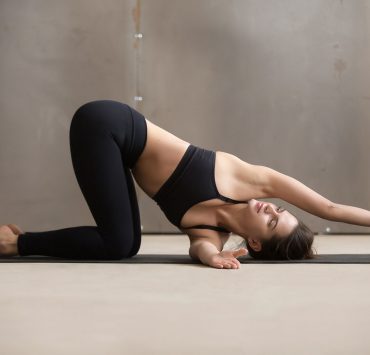
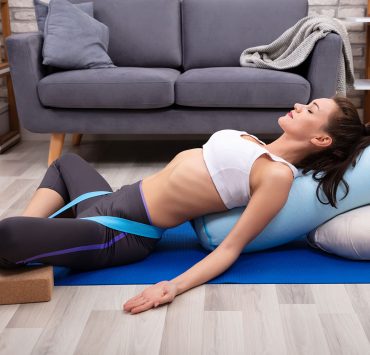

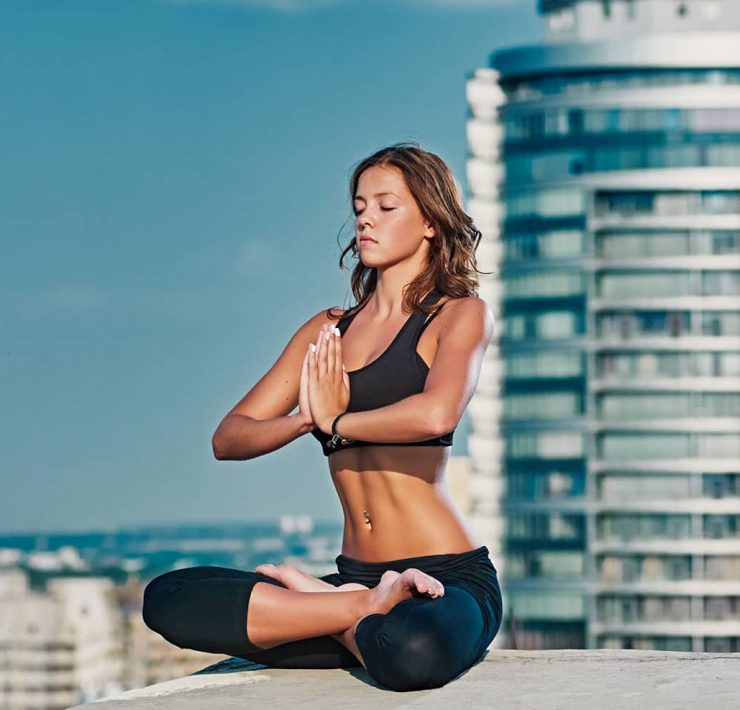
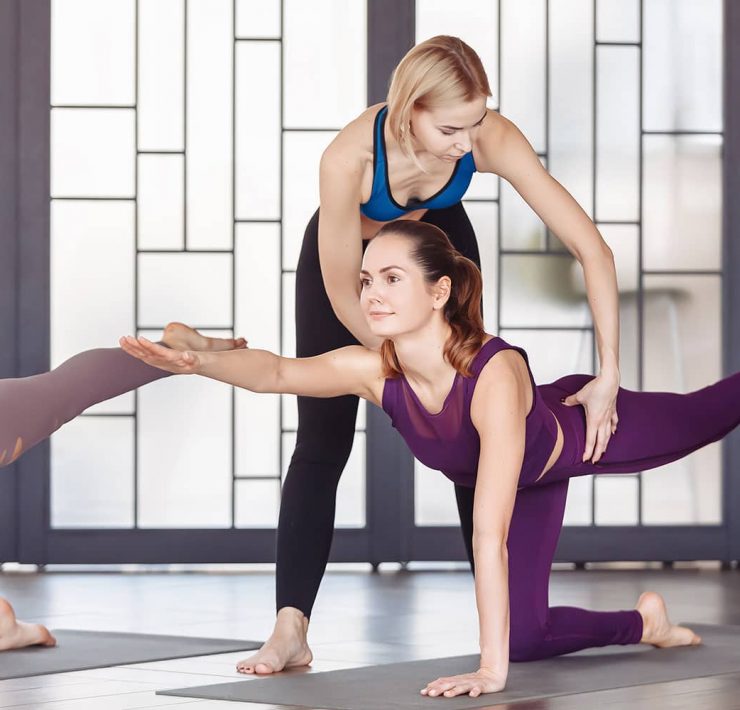
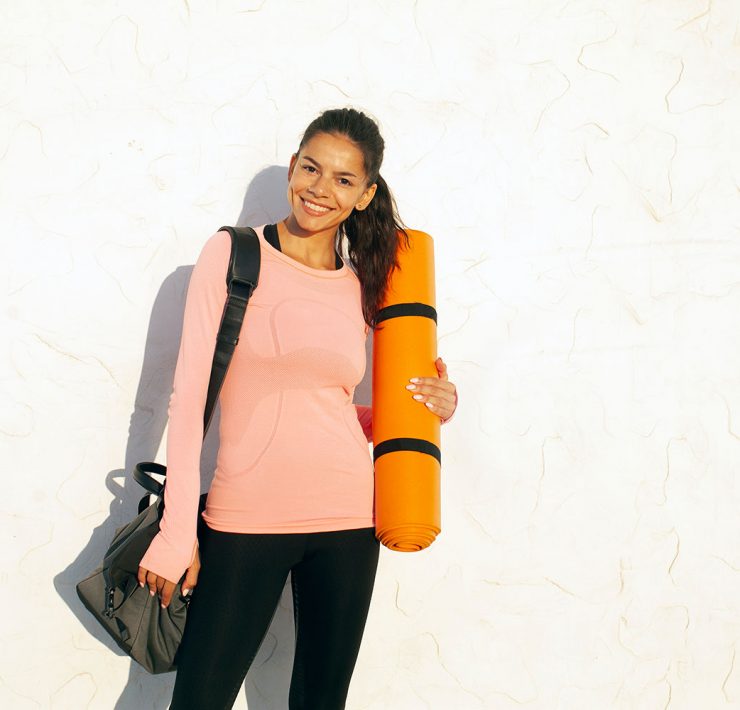
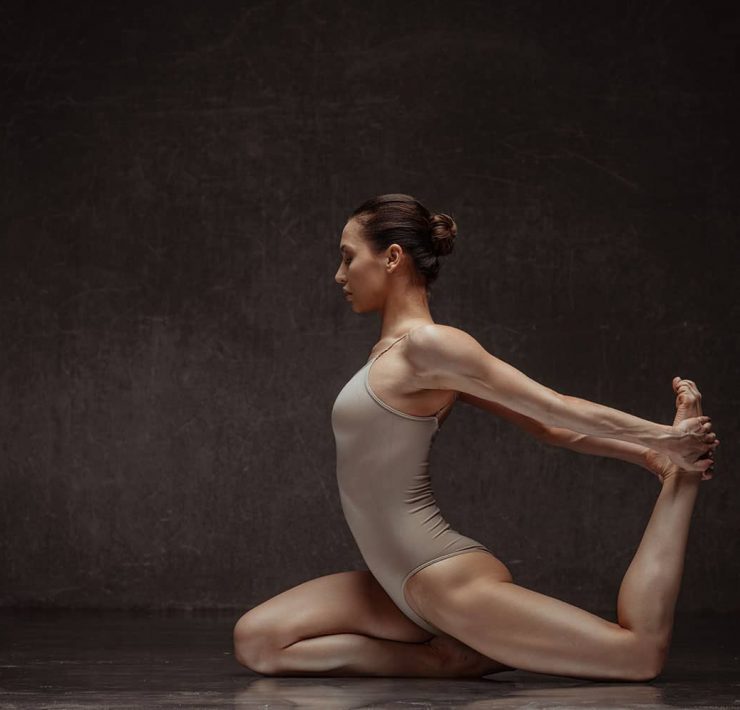
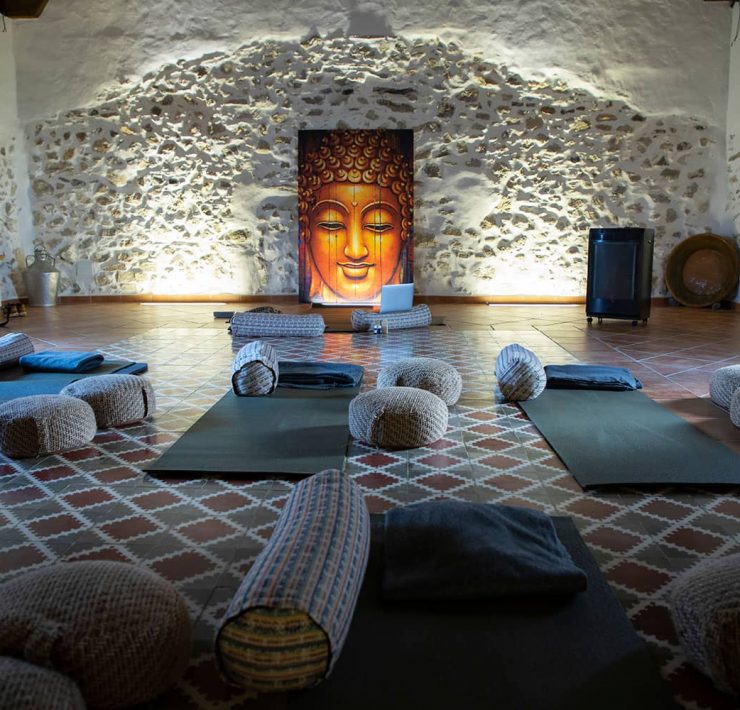

nice post thanks for sharing